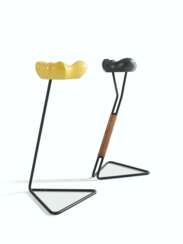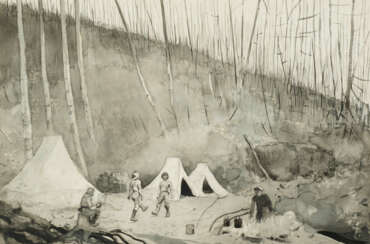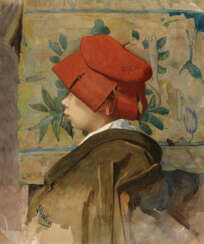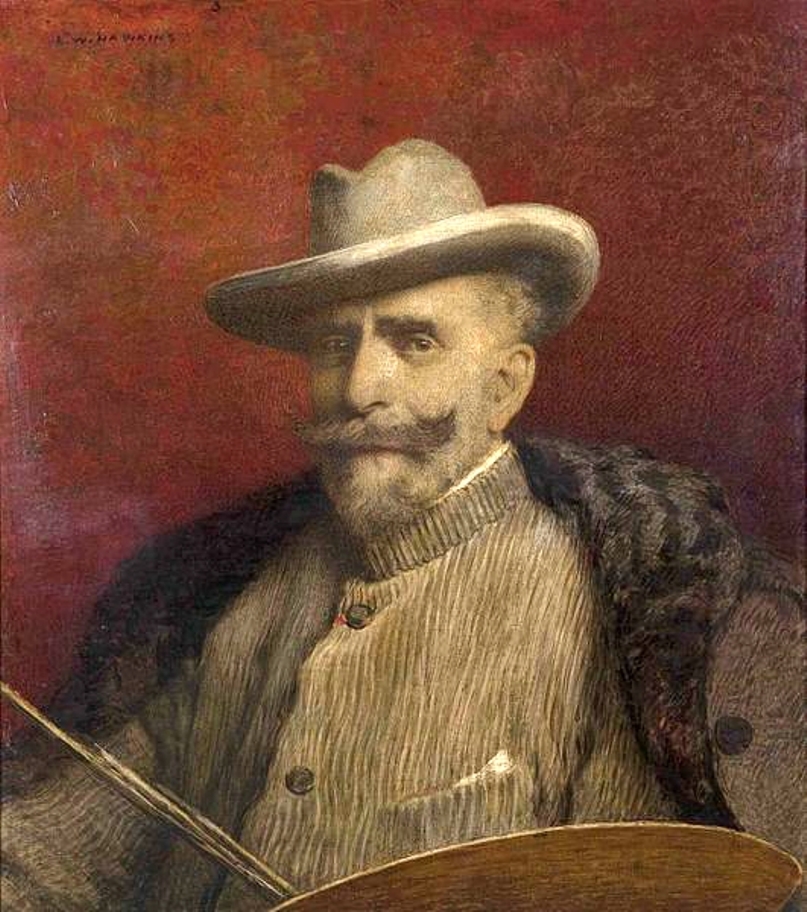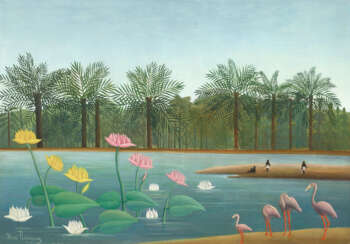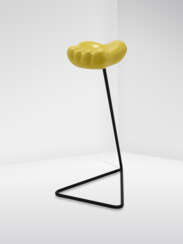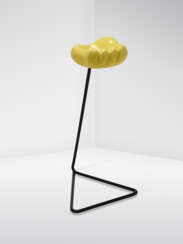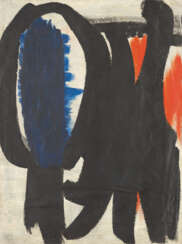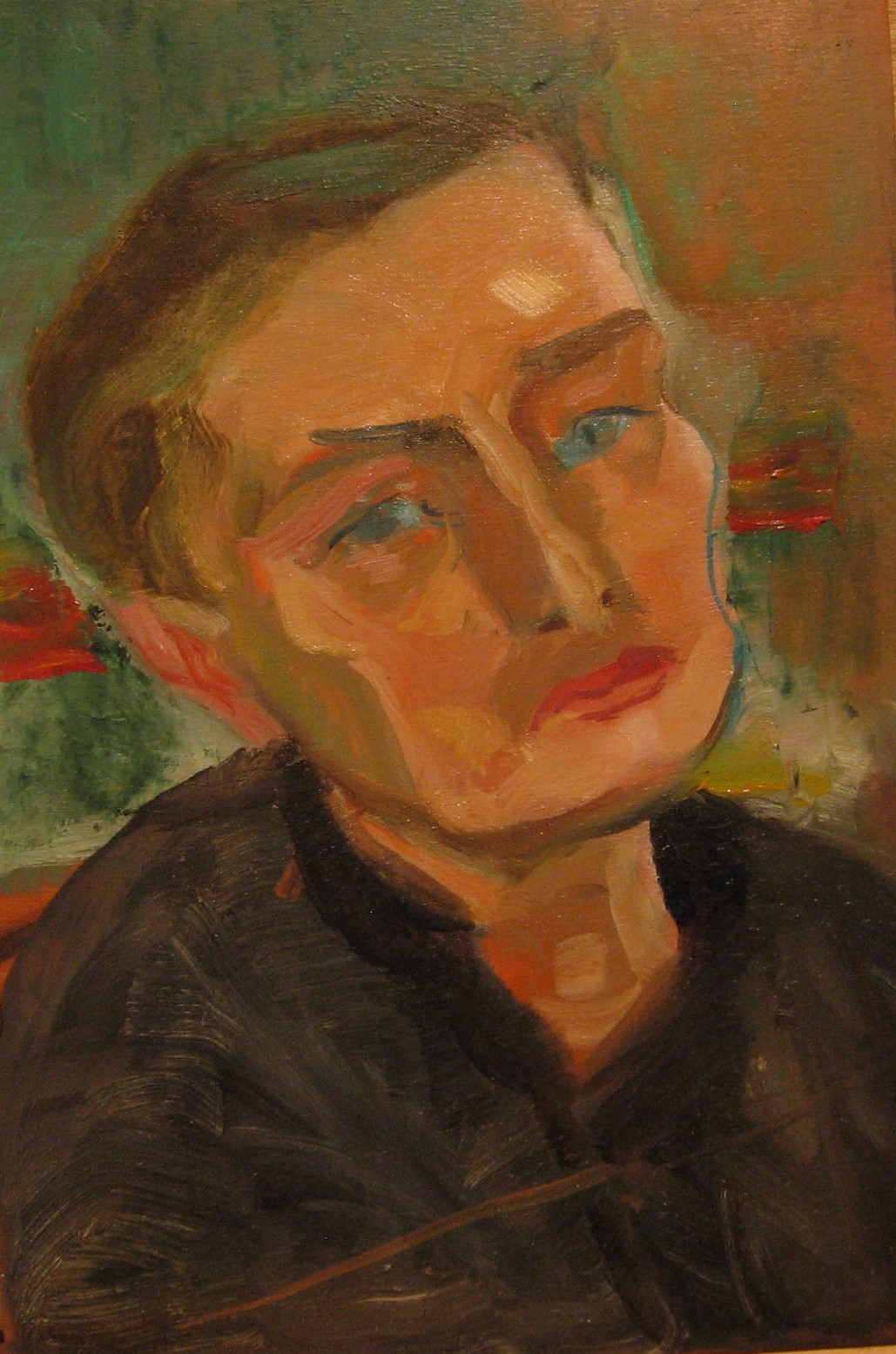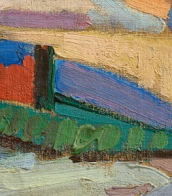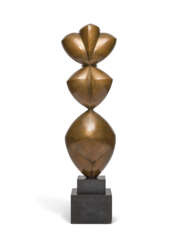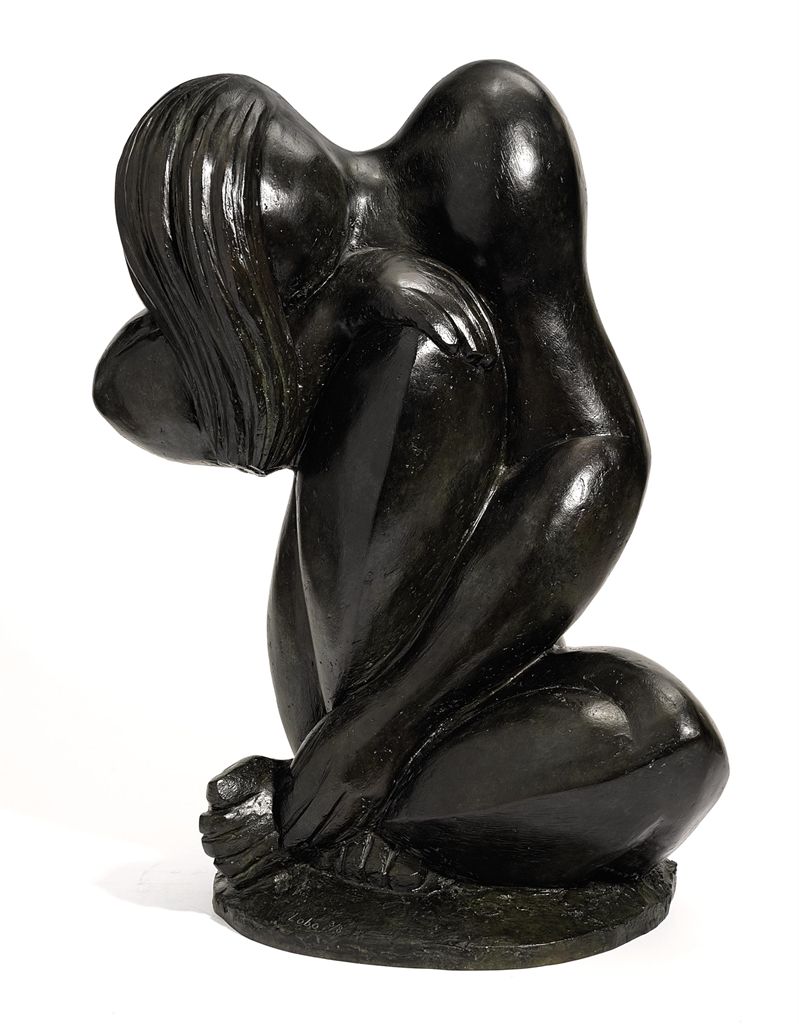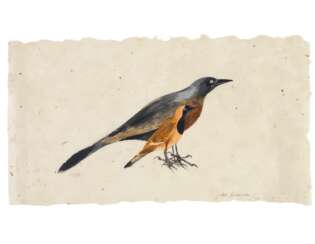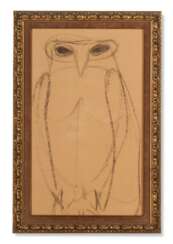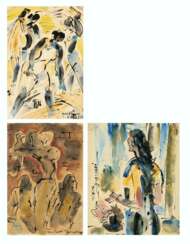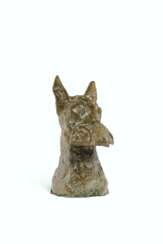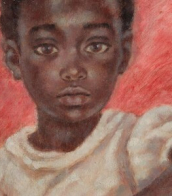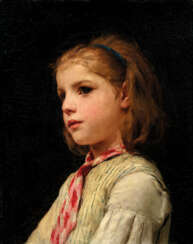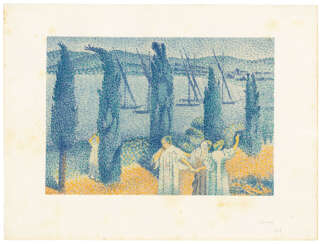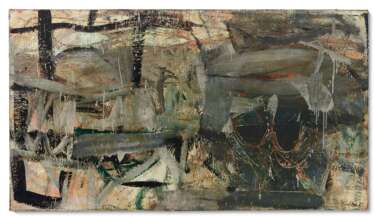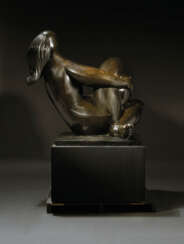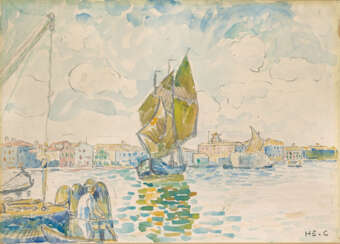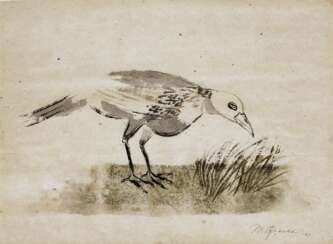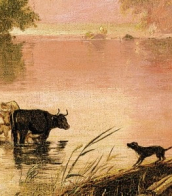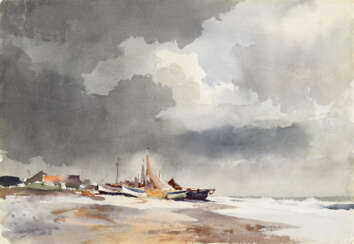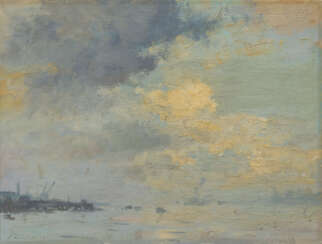1910s
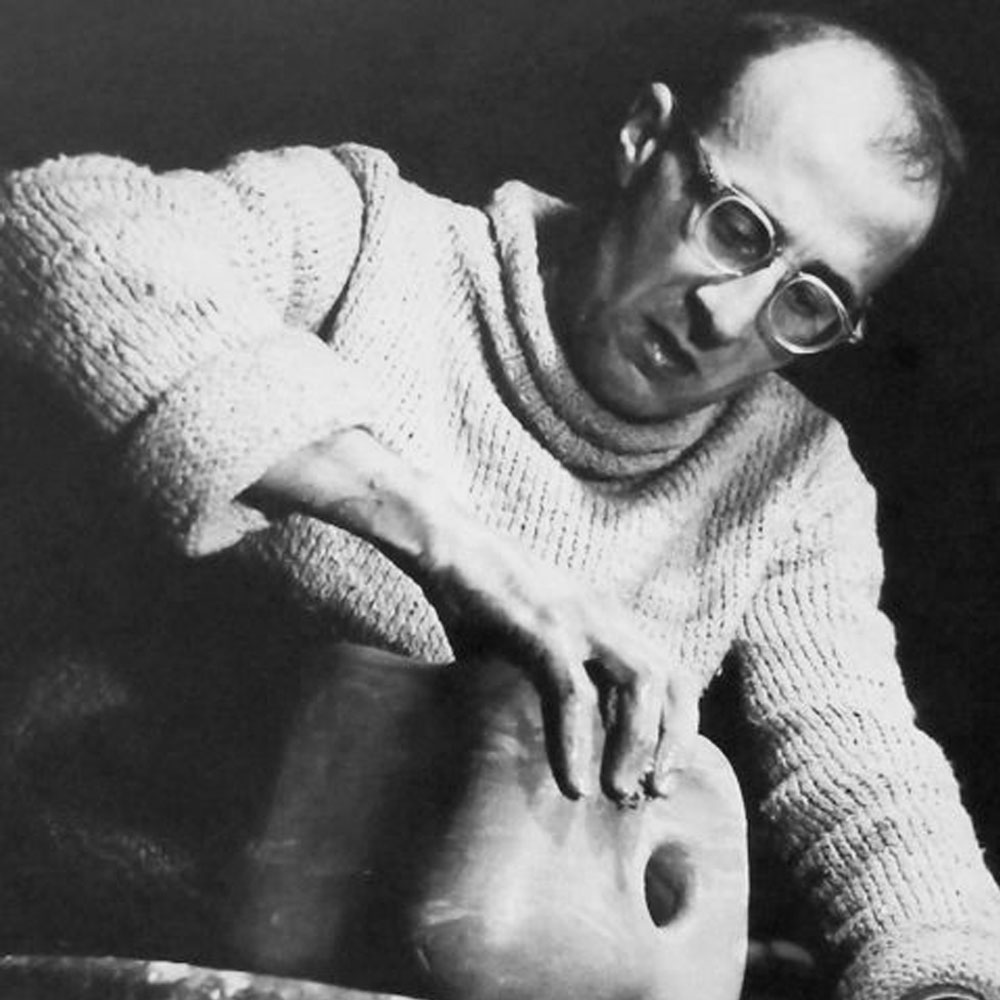
Georges Jouve was an important ceramist of the 20th century. At 17 years old, Jouve enrolled at the prestigious Ecole Boulle in Paris where he received theoretical instruction in Art History in addition to his technical studies as a sculptor. After Graduation in 1930 he first embarked on his artistic career as a theatrical set designer. During World War II, Jouve was captured by the Germans and interned in a German camp. After several attempts he escaped from the camp and took refuge at his step parents home in a potters village in the South of France called Dieulefit. In 1944, Jouve and his family moved back to Paris. He opened his studio in Paris and was invited by Jacques Adnet to participate in the exhibition “La Ceramique Contemporaine” by the Compagnie des Arts Francais. He then participated annually in numerous 'Salons' in France and internationally such as the “Salon des Artistes Decorateurs” in Paris, Association Francaise d'Action Artistique in Rio de Janeiro, and Vienna, Toronto, Rome, Milan, and Cairo.
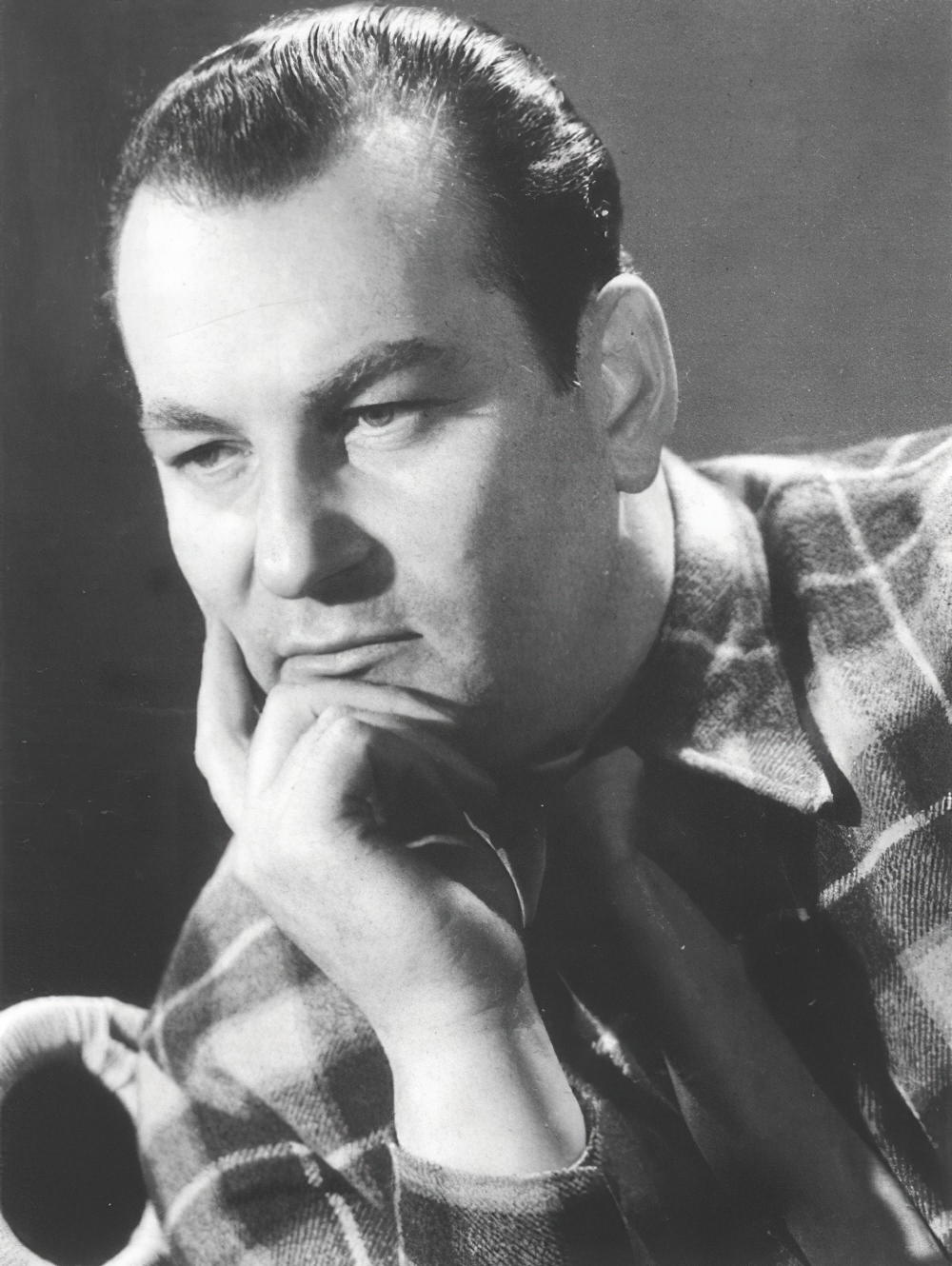
Mathieu Matégot was a Hungarian / French designer and material artist. He was one of the most renowned French designers of the 1950s.
Following the war, Matégot established a workshop for making handcrafted furniture using a variety of materials such as metal, rattan, glass, formica, and perforated sheet metal. The workshop made chairs, tables, sideboards, desks and other objects that he had designed. At first based in Paris, the workshop later moved to Casablanca. All the furniture and other objects had clever, practical and amusing designs. Distributed to decoration shops in editions of 200, his work was extremely successful.
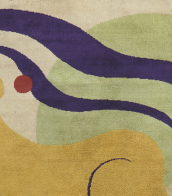

Georges Jouve was an important ceramist of the 20th century. At 17 years old, Jouve enrolled at the prestigious Ecole Boulle in Paris where he received theoretical instruction in Art History in addition to his technical studies as a sculptor. After Graduation in 1930 he first embarked on his artistic career as a theatrical set designer. During World War II, Jouve was captured by the Germans and interned in a German camp. After several attempts he escaped from the camp and took refuge at his step parents home in a potters village in the South of France called Dieulefit. In 1944, Jouve and his family moved back to Paris. He opened his studio in Paris and was invited by Jacques Adnet to participate in the exhibition “La Ceramique Contemporaine” by the Compagnie des Arts Francais. He then participated annually in numerous 'Salons' in France and internationally such as the “Salon des Artistes Decorateurs” in Paris, Association Francaise d'Action Artistique in Rio de Janeiro, and Vienna, Toronto, Rome, Milan, and Cairo.

Mathieu Matégot was a Hungarian / French designer and material artist. He was one of the most renowned French designers of the 1950s.
Following the war, Matégot established a workshop for making handcrafted furniture using a variety of materials such as metal, rattan, glass, formica, and perforated sheet metal. The workshop made chairs, tables, sideboards, desks and other objects that he had designed. At first based in Paris, the workshop later moved to Casablanca. All the furniture and other objects had clever, practical and amusing designs. Distributed to decoration shops in editions of 200, his work was extremely successful.

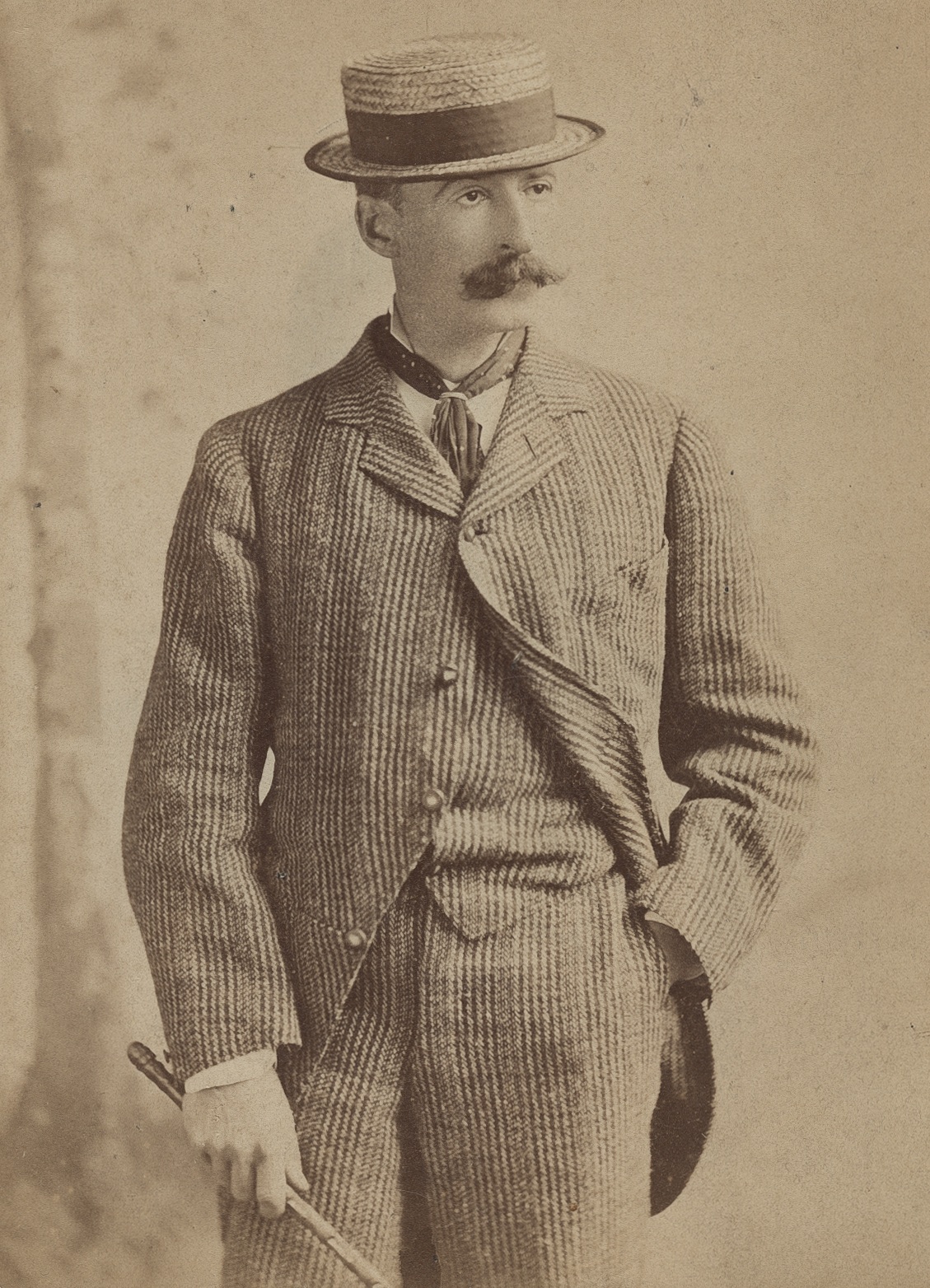
Winslow Homer was an American landscape painter and printmaker, renowned for his mastery of marine subjects and considered a preeminent figure in 19th-century American art. Born in Boston, Massachusetts in 1836, Homer was largely self-taught, starting his career as a commercial illustrator before venturing into oil painting and watercolors.
Homer's art evolved significantly over his lifetime. During the American Civil War, he worked as a correspondent, creating sketches that conveyed both the immediacy and the human cost of the war. This experience deeply influenced his later work, particularly his powerful oil paintings depicting war and its aftermath. After the war, Homer's focus shifted towards scenes of nature and rural America, reflecting a national nostalgia for simpler times. His works from this period, such as "The Cotton Pickers" and "Snap the Whip," showcase his ability to capture everyday life with poignant realism and emotional depth.
Later in his career, Homer became renowned for his watercolors and seascapes, such as "Breezing Up (A Fair Wind)" and "The Gulf Stream," which are celebrated for their dynamic composition and vivid portrayal of human interaction with nature. His late seascapes, which often depicted the rugged coastlines of Maine, are particularly noted for their dramatic intensity and hint at modernist abstraction, capturing the formidable power and timeless beauty of the sea.
Homer's works are held in high regard and continue to be featured in major museums and galleries, providing inspiration and insight into the American experience of the 19th century.
For those interested in the works of Winslow Homer and the impact of his art, you can sign up for updates related to new product sales and auction events featuring his work. This will keep you informed on opportunities to engage more deeply with Homer's enduring legacy.
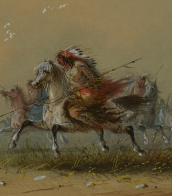
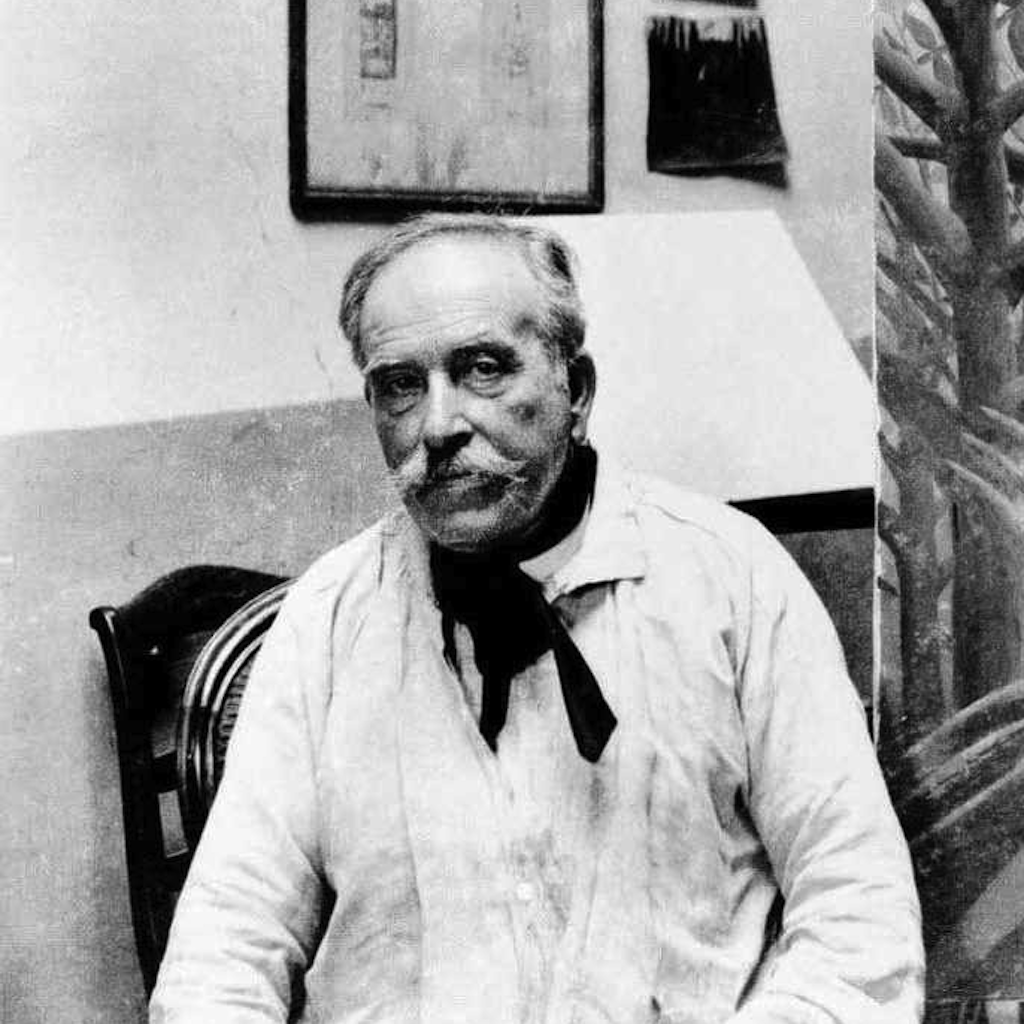
Henri Rousseau was a remarkable French painter, whose work continues to captivate art collectors and experts. Born in Laval, France, in 1844, Rousseau's artistic journey was unconventional. He began painting later in life, around the age of forty, and was primarily self-taught. Despite a lack of formal training, Rousseau developed a unique style that set him apart in the art world.
Rousseau's paintings, characterized by their rich colors and detailed depiction of jungle scenes, wild animals, and exotic figures, marked him as the archetype of the modern naïve artist. He regularly exhibited at the Salon des Indépendants from 1886, gaining attention and admiration over time, especially for works like "Tiger in a Tropical Storm (Surprised!)" and "The Sleeping Gypsy". His art was distinctive for its dreamlike quality and its blend of fantasy and reality.
In 1905, Rousseau exhibited "The Hungry Lion Throws Itself on the Antelope" at the Salon des Indépendants, alongside works by avant-garde artists such as Henri Matisse, marking the first showing of The Fauves. This exhibition was a significant moment, as it highlighted Rousseau's influence on and connection with contemporary art movements. His work, particularly his jungle scenes, was a precursor to surrealism, seen in later artists like René Magritte.
Rousseau's art also included suburban landscapes of Paris, offering a tranquil and cultivated view of the city in contrast to the emotionally charged jungles. These works often included modern elements like smokestacks and telephone poles, yet maintained an eerie stillness, making the familiar appear strange.
A notable event in Rousseau's life was the banquet held in his honor by Pablo Picasso in 1908, an event that signified Rousseau's growing recognition and influence in the art world. This gathering was attended by many influential artists and writers of the time.
Rousseau continued to paint until his death in 1910. His final painting, "The Dream", was exhibited in the same year. Today, Rousseau's works are celebrated for their originality and imaginative quality, and can be found in major museums and galleries worldwide.
For art collectors and experts, Rousseau's work represents a unique blend of naïve art and modern artistic movements. His influence on subsequent artists and his distinct style make his paintings a valuable addition to any collection.
Stay updated on new discoveries and sales related to Henri Rousseau by signing up for our updates. Please note, this subscription is specifically for alerts on new product sales and auction events related to Henri Rousseau.


Georges Jouve was an important ceramist of the 20th century. At 17 years old, Jouve enrolled at the prestigious Ecole Boulle in Paris where he received theoretical instruction in Art History in addition to his technical studies as a sculptor. After Graduation in 1930 he first embarked on his artistic career as a theatrical set designer. During World War II, Jouve was captured by the Germans and interned in a German camp. After several attempts he escaped from the camp and took refuge at his step parents home in a potters village in the South of France called Dieulefit. In 1944, Jouve and his family moved back to Paris. He opened his studio in Paris and was invited by Jacques Adnet to participate in the exhibition “La Ceramique Contemporaine” by the Compagnie des Arts Francais. He then participated annually in numerous 'Salons' in France and internationally such as the “Salon des Artistes Decorateurs” in Paris, Association Francaise d'Action Artistique in Rio de Janeiro, and Vienna, Toronto, Rome, Milan, and Cairo.


Georges Jouve was an important ceramist of the 20th century. At 17 years old, Jouve enrolled at the prestigious Ecole Boulle in Paris where he received theoretical instruction in Art History in addition to his technical studies as a sculptor. After Graduation in 1930 he first embarked on his artistic career as a theatrical set designer. During World War II, Jouve was captured by the Germans and interned in a German camp. After several attempts he escaped from the camp and took refuge at his step parents home in a potters village in the South of France called Dieulefit. In 1944, Jouve and his family moved back to Paris. He opened his studio in Paris and was invited by Jacques Adnet to participate in the exhibition “La Ceramique Contemporaine” by the Compagnie des Arts Francais. He then participated annually in numerous 'Salons' in France and internationally such as the “Salon des Artistes Decorateurs” in Paris, Association Francaise d'Action Artistique in Rio de Janeiro, and Vienna, Toronto, Rome, Milan, and Cairo.

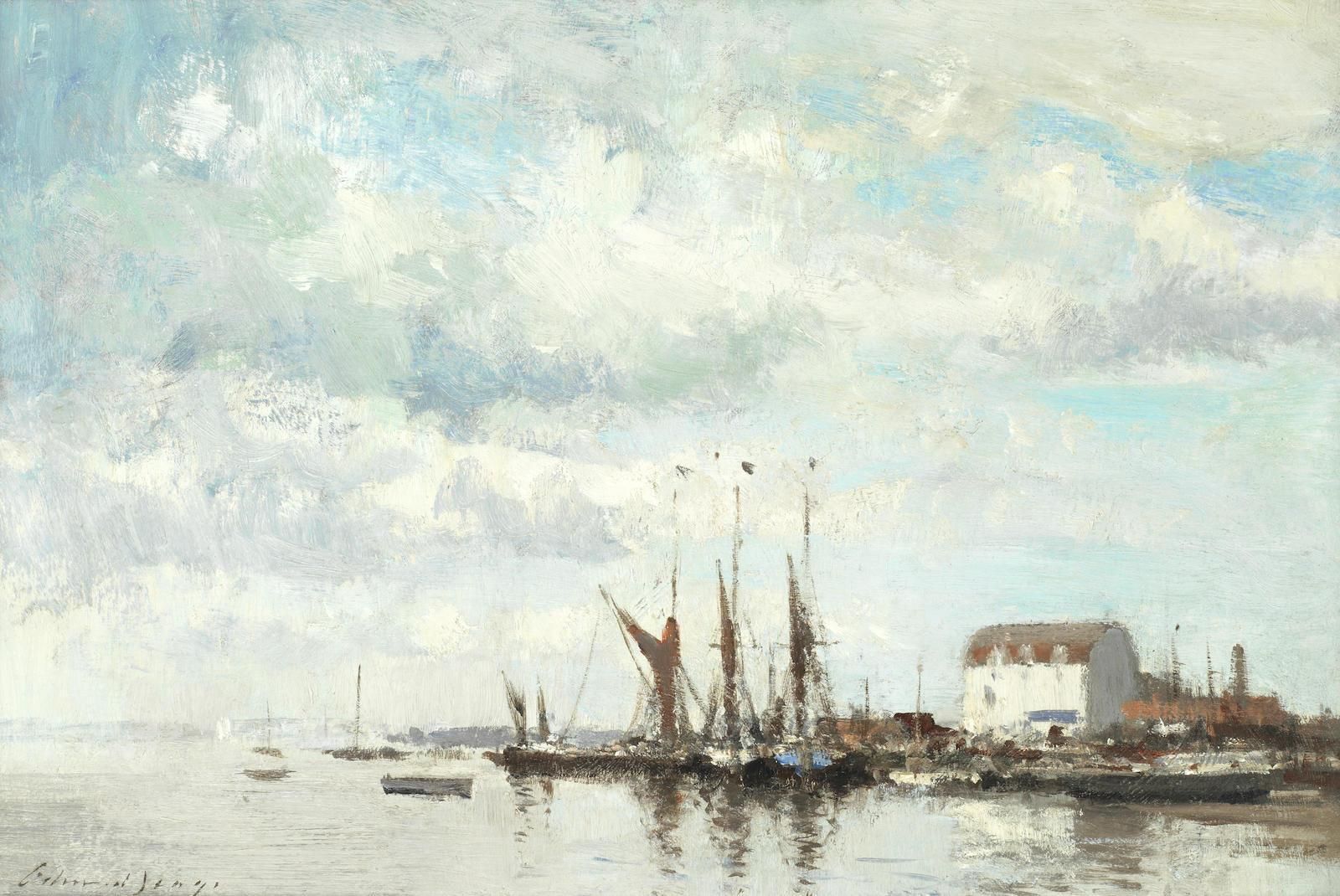
Edward Brian Seago was an English artist who painted in both oils and watercolours.
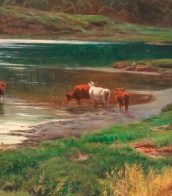

Winslow Homer was an American landscape painter and printmaker, renowned for his mastery of marine subjects and considered a preeminent figure in 19th-century American art. Born in Boston, Massachusetts in 1836, Homer was largely self-taught, starting his career as a commercial illustrator before venturing into oil painting and watercolors.
Homer's art evolved significantly over his lifetime. During the American Civil War, he worked as a correspondent, creating sketches that conveyed both the immediacy and the human cost of the war. This experience deeply influenced his later work, particularly his powerful oil paintings depicting war and its aftermath. After the war, Homer's focus shifted towards scenes of nature and rural America, reflecting a national nostalgia for simpler times. His works from this period, such as "The Cotton Pickers" and "Snap the Whip," showcase his ability to capture everyday life with poignant realism and emotional depth.
Later in his career, Homer became renowned for his watercolors and seascapes, such as "Breezing Up (A Fair Wind)" and "The Gulf Stream," which are celebrated for their dynamic composition and vivid portrayal of human interaction with nature. His late seascapes, which often depicted the rugged coastlines of Maine, are particularly noted for their dramatic intensity and hint at modernist abstraction, capturing the formidable power and timeless beauty of the sea.
Homer's works are held in high regard and continue to be featured in major museums and galleries, providing inspiration and insight into the American experience of the 19th century.
For those interested in the works of Winslow Homer and the impact of his art, you can sign up for updates related to new product sales and auction events featuring his work. This will keep you informed on opportunities to engage more deeply with Homer's enduring legacy.
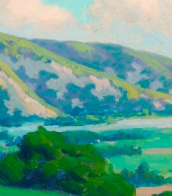
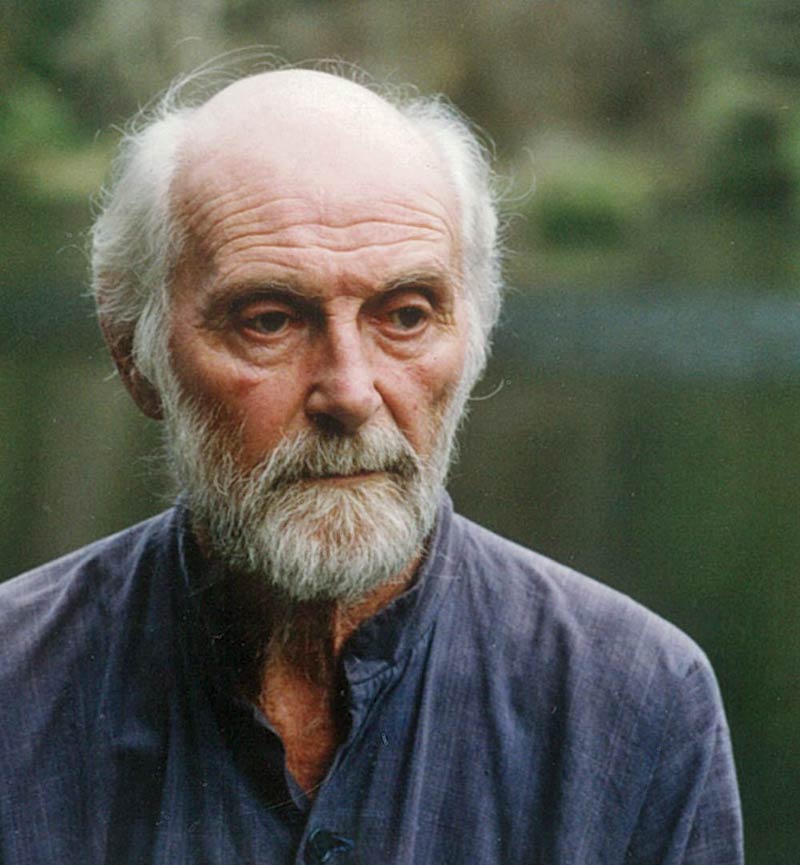
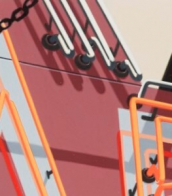
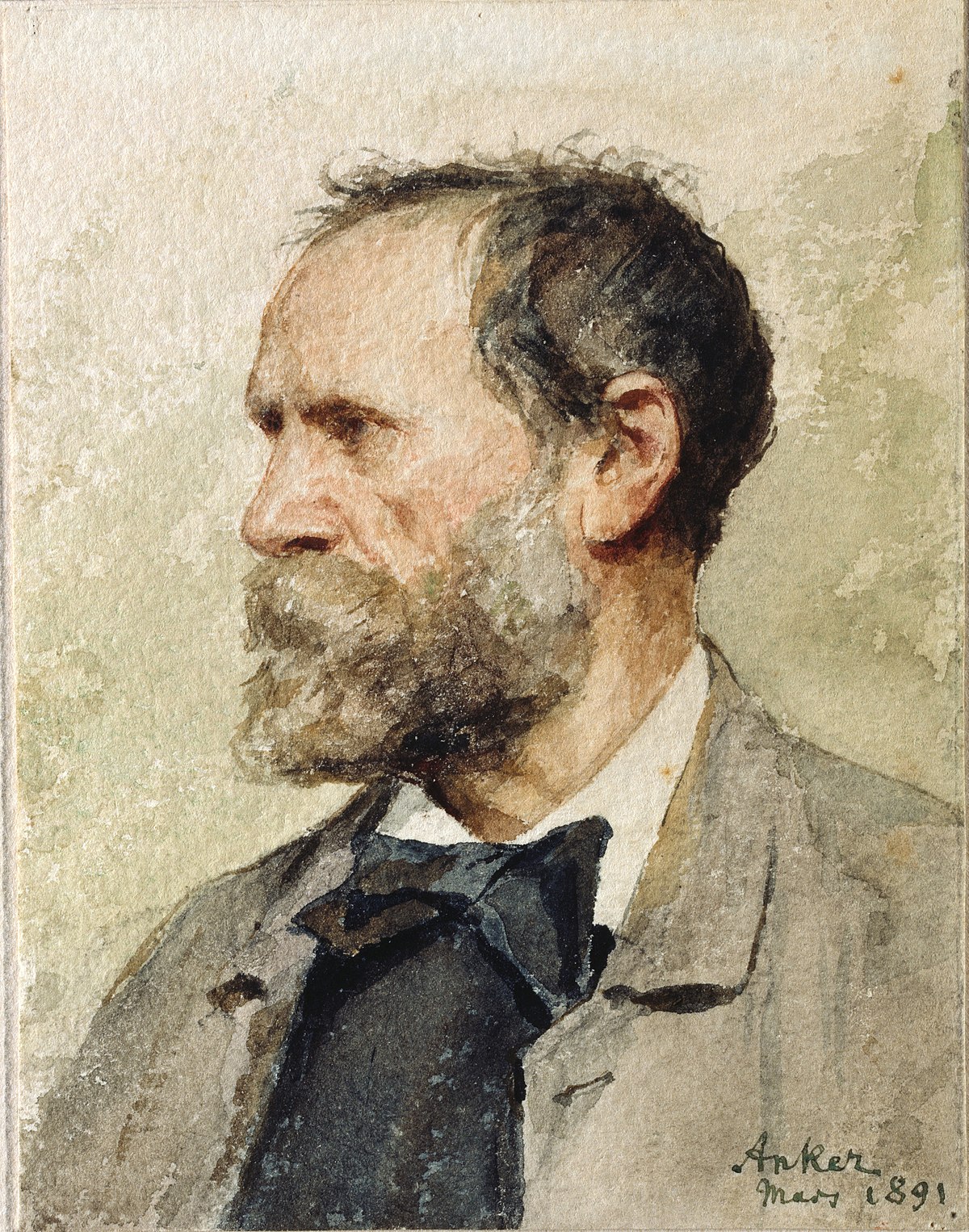
Albert Samuel Anker was a Swiss painter, gesture painter and graphic artist.
Albert studied at the École Nationale Supérieure des Beaux-Arts in Paris and exhibited his work at the Paris Salons, where he was awarded a gold medal in 1866. Anker painted many realistic portraits and genre scenes of ordinary Swiss life. In many of them he depicted children, including his own. Thanks to his paintings, Albert Anker was the most popular genre painter of 19th century Switzerland. He also decorated more than 500 earthenware plates for the Alsatian ceramicist Theodor Deck.
Anker was a member of the Grand Council of the Canton of Bern, initiated the creation of the city museum, and held the rank of officer of the Legion of Honor.
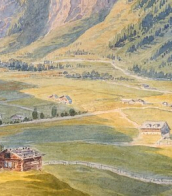
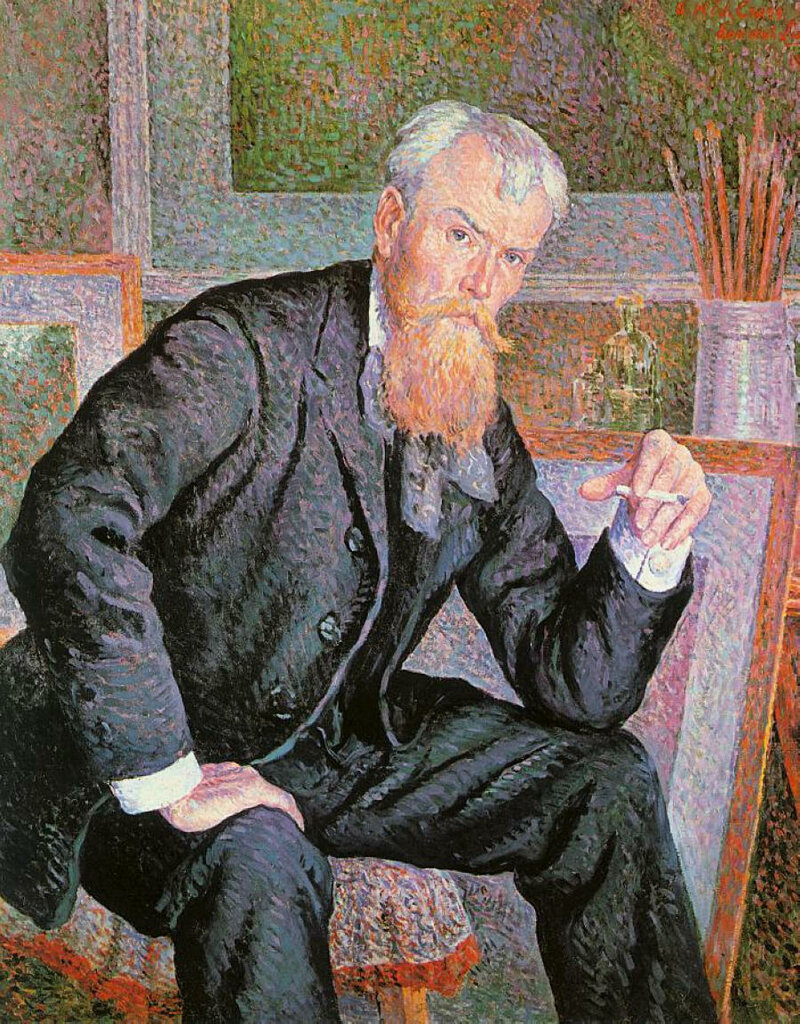
Henri Edmond Cross, a French painter and printmaker, emerged as a pivotal figure in the Neo-Impressionism movement, significantly influencing the realm of modern art. His work, celebrated for its innovative use of color and technique, played a crucial role in transitioning from Pointillism to broader, more expressive brushstrokes, marking a departure from strict naturalism. This evolution allowed for greater personal expression and creativity, profoundly impacting artists like Henri Matisse, who was inspired by Cross's harmonious representations of Arcadian landscapes.
Cross's paintings, characterized by their vibrant color harmonies and lyrical emotion, encapsulate the artist's desire to portray utopian ideals, often reflecting his anarchist beliefs in a hopeful, ideal society. His works, such as "L'air du Soir" and "La Plage de Saint-Clair," showcase his mastery of light and color, embodying the Neo-Impressionist vision of creating harmonies of pure color independent of naturalistic constraints. These pieces not only exemplify Cross's technical prowess but also his philosophical aspirations, intertwining art with social and political ideals.
Despite the challenges posed by his health in later years, Cross's productivity and creativity remained undiminished, leading to significant critical acclaim and commercial success. His solo exhibitions, particularly the one held at Galerie Druet in Paris in 1905, received widespread acclaim, underscoring his influence on the art world and his role in shaping the principles that would guide future movements such as Fauvism.
For collectors and experts in art and antiques, Henri-Edmond Cross's work represents a crucial juncture in the evolution of modern art, offering insights into the transition from the meticulous dots of Pointillism to the expressive freedom of later movements. His legacy is preserved in esteemed institutions like the Musée d'Orsay, where his masterpieces continue to inspire admiration and study.
For those interested in the intersection of art, culture, and history, signing up for updates on sales and auction events related to Henri-Edmond Cross can offer valuable opportunities to engage with the vibrant legacy of this influential artist. This subscription ensures access to the latest offerings and insights into the world of Neo-Impressionism, inviting enthusiasts to deepen their appreciation for Cross's contribution to modern art.
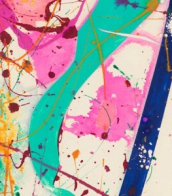
Franz Kline, an American painter, emerged as a pivotal figure in the post-World War II art scene, where his dynamic black and white abstract paintings redefined the boundaries of abstract expressionism. Born in 1910, Kline's unique approach to painting, characterized by bold, gestural brushstrokes and a stark monochromatic palette, positioned him as a key contributor to the development of Abstract Expressionism, a movement that celebrated spontaneity, powerful expressions of emotion, and individuality in art. His work is not merely an exploration of form and space but a dramatic interaction of light and shadow, evoking intense emotional responses from viewers.
Kline's artistry is distinguished by its focus on the contrast between black and white, using abstract forms to create a sense of dynamic motion and energy. This distinctive style stemmed from his initial experiments with brushstrokes, which evolved from figurative sketches to monumental, abstract compositions. His paintings, such as "Chief" (1950) and "Mahoning" (1956), showcase this dramatic scale and abstract expressionism, making them iconic pieces of American art. These works are celebrated in major museums and galleries worldwide, highlighting Kline's contribution to modern art.
Kline's influence extends beyond his immediate impact on Abstract Expressionism, shaping the trajectory of modern art with his innovative techniques and philosophical approach to painting. His legacy is preserved in the collections of prestigious institutions such as The Museum of Modern Art in New York and the Tate Gallery in London, where his works continue to inspire art lovers, collectors, and experts in the fields of art and antiques. For those passionate about exploring the depths of abstract expressionism and the pioneering artists behind its rise, Franz Kline's work offers a captivating journey into the essence of emotional expression through art.
To stay informed about upcoming sales, auctions, and events related to the remarkable work of Franz Kline, we invite you to sign up for our updates. This subscription is an exclusive opportunity for collectors and art experts to access the latest on available pieces and notable auction events. Join our community to ensure you never miss an opportunity to engage with the legacy of Franz Kline.
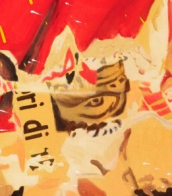
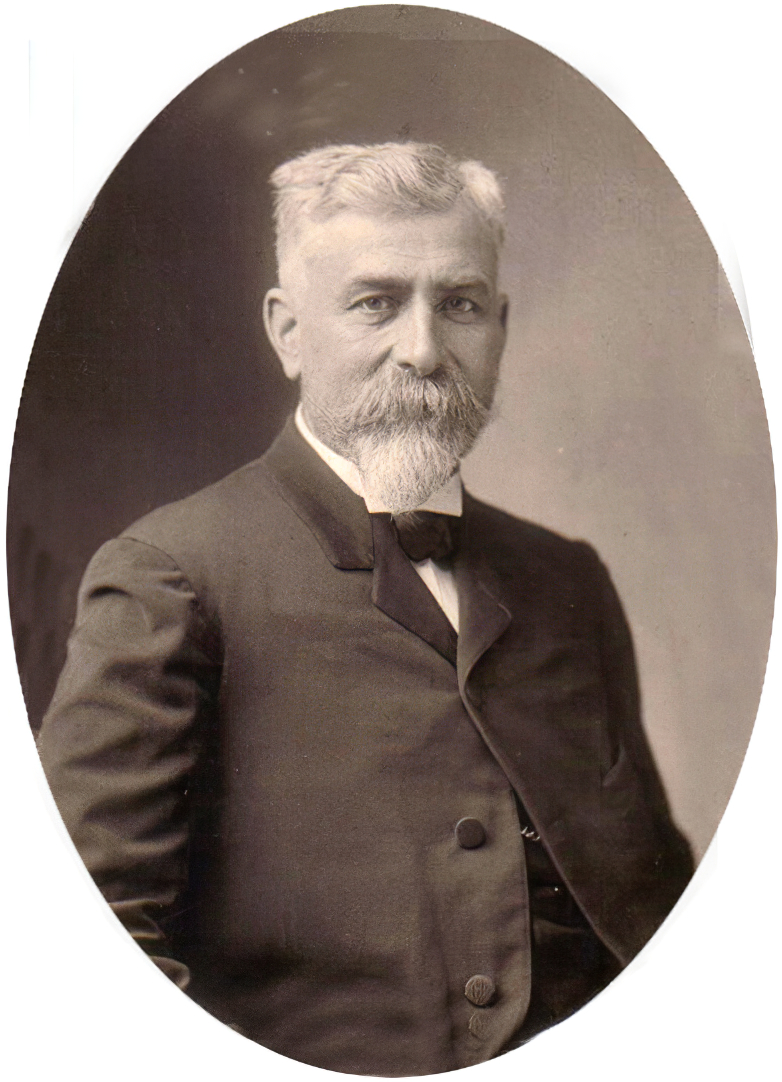
Julien Dupré, a distinguished French artist, emerged as a pivotal figure in the realm of painting, celebrated for his vivid and heartfelt portrayals of peasant life. Born into a family of jewelers in 1851, Dupré's artistic journey commenced in an unexpected turn of events when the Franco-Prussian war led him to pursue art, eventually studying at the École des Beaux-Arts under renowned teachers like Isidore Pils and Henri Lehmann.
Julien Dupré's oeuvre is renowned for its realistic depiction of rural scenes, particularly in Normandy and Brittany, capturing the essence of peasant life with a blend of romanticism and realism. His commitment to depicting the rustic life earned him prestigious accolades, including a gold medal at the Exposition Universelle in 1889 and the esteemed Legion of Honour in 1892.
Among his notable works are "The Hay Harvest" at the Chimei Museum, "Haying Scene" at the St. Louis Art Museum, and "The Haymakers" at the Worcester Art Museum. These paintings not only illustrate Julien Dupré's masterful depiction of rural life but also resonate with art enthusiasts and collectors worldwide for their historical and cultural significance.
For collectors and art aficionados, Julien Dupré's paintings are a testament to a bygone era, offering a window into the pastoral life of 19th-century France. His works are not merely artistic endeavors but historical narratives woven onto canvas, celebrating the unvarnished beauty of the countryside and its inhabitants.
If you're captivated by Julien Dupré's artistic legacy and wish to stay informed about upcoming sales and auction events featuring his works, consider signing up for updates. This subscription is your gateway to exploring the enchanting world of Dupré, ensuring you're abreast of the latest opportunities to own a piece of French art history.
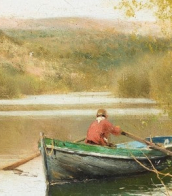

Henri Edmond Cross, a French painter and printmaker, emerged as a pivotal figure in the Neo-Impressionism movement, significantly influencing the realm of modern art. His work, celebrated for its innovative use of color and technique, played a crucial role in transitioning from Pointillism to broader, more expressive brushstrokes, marking a departure from strict naturalism. This evolution allowed for greater personal expression and creativity, profoundly impacting artists like Henri Matisse, who was inspired by Cross's harmonious representations of Arcadian landscapes.
Cross's paintings, characterized by their vibrant color harmonies and lyrical emotion, encapsulate the artist's desire to portray utopian ideals, often reflecting his anarchist beliefs in a hopeful, ideal society. His works, such as "L'air du Soir" and "La Plage de Saint-Clair," showcase his mastery of light and color, embodying the Neo-Impressionist vision of creating harmonies of pure color independent of naturalistic constraints. These pieces not only exemplify Cross's technical prowess but also his philosophical aspirations, intertwining art with social and political ideals.
Despite the challenges posed by his health in later years, Cross's productivity and creativity remained undiminished, leading to significant critical acclaim and commercial success. His solo exhibitions, particularly the one held at Galerie Druet in Paris in 1905, received widespread acclaim, underscoring his influence on the art world and his role in shaping the principles that would guide future movements such as Fauvism.
For collectors and experts in art and antiques, Henri-Edmond Cross's work represents a crucial juncture in the evolution of modern art, offering insights into the transition from the meticulous dots of Pointillism to the expressive freedom of later movements. His legacy is preserved in esteemed institutions like the Musée d'Orsay, where his masterpieces continue to inspire admiration and study.
For those interested in the intersection of art, culture, and history, signing up for updates on sales and auction events related to Henri-Edmond Cross can offer valuable opportunities to engage with the vibrant legacy of this influential artist. This subscription ensures access to the latest offerings and insights into the world of Neo-Impressionism, inviting enthusiasts to deepen their appreciation for Cross's contribution to modern art.


Henri Edmond Cross, a French painter and printmaker, emerged as a pivotal figure in the Neo-Impressionism movement, significantly influencing the realm of modern art. His work, celebrated for its innovative use of color and technique, played a crucial role in transitioning from Pointillism to broader, more expressive brushstrokes, marking a departure from strict naturalism. This evolution allowed for greater personal expression and creativity, profoundly impacting artists like Henri Matisse, who was inspired by Cross's harmonious representations of Arcadian landscapes.
Cross's paintings, characterized by their vibrant color harmonies and lyrical emotion, encapsulate the artist's desire to portray utopian ideals, often reflecting his anarchist beliefs in a hopeful, ideal society. His works, such as "L'air du Soir" and "La Plage de Saint-Clair," showcase his mastery of light and color, embodying the Neo-Impressionist vision of creating harmonies of pure color independent of naturalistic constraints. These pieces not only exemplify Cross's technical prowess but also his philosophical aspirations, intertwining art with social and political ideals.
Despite the challenges posed by his health in later years, Cross's productivity and creativity remained undiminished, leading to significant critical acclaim and commercial success. His solo exhibitions, particularly the one held at Galerie Druet in Paris in 1905, received widespread acclaim, underscoring his influence on the art world and his role in shaping the principles that would guide future movements such as Fauvism.
For collectors and experts in art and antiques, Henri-Edmond Cross's work represents a crucial juncture in the evolution of modern art, offering insights into the transition from the meticulous dots of Pointillism to the expressive freedom of later movements. His legacy is preserved in esteemed institutions like the Musée d'Orsay, where his masterpieces continue to inspire admiration and study.
For those interested in the intersection of art, culture, and history, signing up for updates on sales and auction events related to Henri-Edmond Cross can offer valuable opportunities to engage with the vibrant legacy of this influential artist. This subscription ensures access to the latest offerings and insights into the world of Neo-Impressionism, inviting enthusiasts to deepen their appreciation for Cross's contribution to modern art.

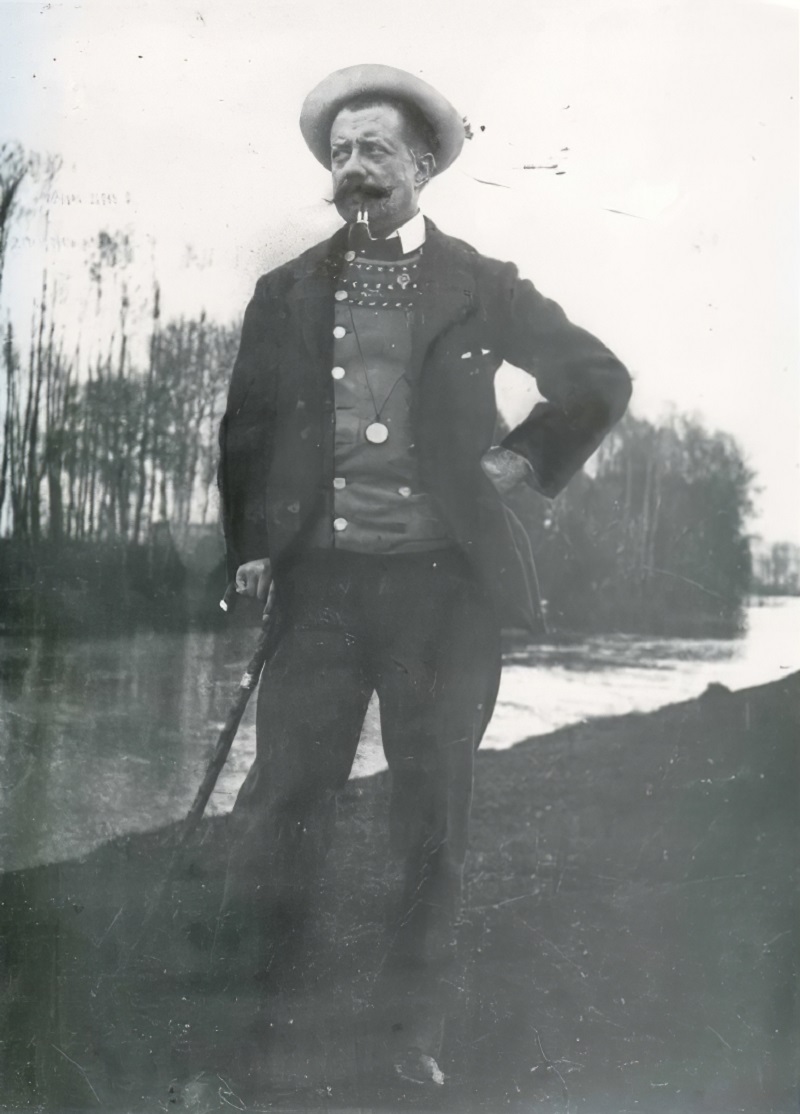
Hippolyte Camille Delpy was a French painter.
He came from a moderately wealthy family from Joigny, in the Burgundy region of France. His son, Henry Jacques Delpy (1877-1957), also became a painter, as did a cousin on his father's side, Lucien-Victor Delpy (1898-1967).
Delpy studied with Charles-François Daubigny as well as Corot. A contemporary of the Impressionists, Delpy blended the subject matter that he adopted from Daubigny with the brighter colors and looser paint handling that were trademarks of his own generation to create distinctive new visions of many of the landscapes first explored by the Barbizon artists.
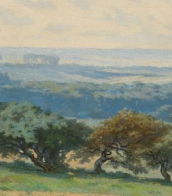

Julien Dupré, a distinguished French artist, emerged as a pivotal figure in the realm of painting, celebrated for his vivid and heartfelt portrayals of peasant life. Born into a family of jewelers in 1851, Dupré's artistic journey commenced in an unexpected turn of events when the Franco-Prussian war led him to pursue art, eventually studying at the École des Beaux-Arts under renowned teachers like Isidore Pils and Henri Lehmann.
Julien Dupré's oeuvre is renowned for its realistic depiction of rural scenes, particularly in Normandy and Brittany, capturing the essence of peasant life with a blend of romanticism and realism. His commitment to depicting the rustic life earned him prestigious accolades, including a gold medal at the Exposition Universelle in 1889 and the esteemed Legion of Honour in 1892.
Among his notable works are "The Hay Harvest" at the Chimei Museum, "Haying Scene" at the St. Louis Art Museum, and "The Haymakers" at the Worcester Art Museum. These paintings not only illustrate Julien Dupré's masterful depiction of rural life but also resonate with art enthusiasts and collectors worldwide for their historical and cultural significance.
For collectors and art aficionados, Julien Dupré's paintings are a testament to a bygone era, offering a window into the pastoral life of 19th-century France. His works are not merely artistic endeavors but historical narratives woven onto canvas, celebrating the unvarnished beauty of the countryside and its inhabitants.
If you're captivated by Julien Dupré's artistic legacy and wish to stay informed about upcoming sales and auction events featuring his works, consider signing up for updates. This subscription is your gateway to exploring the enchanting world of Dupré, ensuring you're abreast of the latest opportunities to own a piece of French art history.


Edward Brian Seago was an English artist who painted in both oils and watercolours.


Edward Brian Seago was an English artist who painted in both oils and watercolours.



